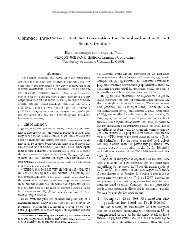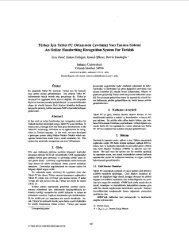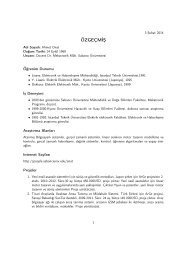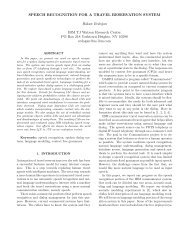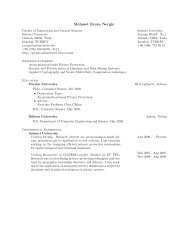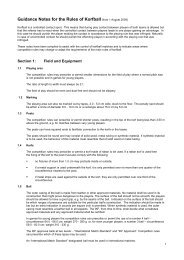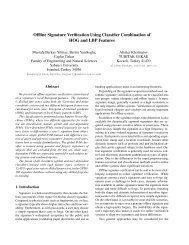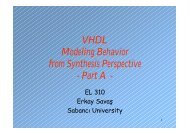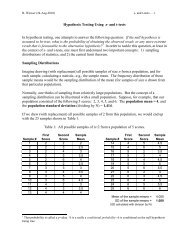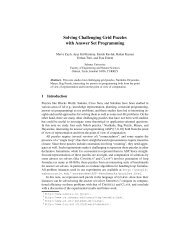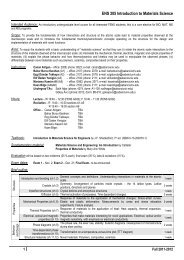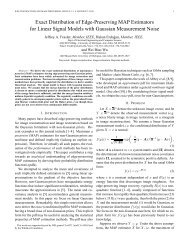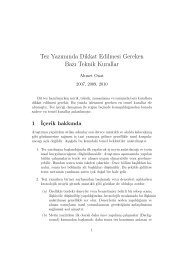Cotton gauze bearing non-diffusible quaternary ammonium salts ...
Cotton gauze bearing non-diffusible quaternary ammonium salts ...
Cotton gauze bearing non-diffusible quaternary ammonium salts ...
You also want an ePaper? Increase the reach of your titles
YUMPU automatically turns print PDFs into web optimized ePapers that Google loves.
Anti-microbial Efficacy, Results and Discussion<br />
(A) (B) (C) (D) (E) (F) (G)<br />
Figure 6 shows that GPF was expressed on native <strong>gauze</strong> but not AEM 5700-treated <strong>gauze</strong>:<br />
The photographs taken under UV light (in B&W and color) show that treating <strong>gauze</strong> with<br />
trimethoxysilylpropyldimethyloctadecyl <strong>ammonium</strong> chloride at least curbs the expression of GPF in<br />
gram (-) E coli <strong>bearing</strong> the GFP gene. The question remaining to be answered is whether or not E coli<br />
was actually killed by the action of AEM 5700. Inoculation method: <strong>Cotton</strong> was autoclaved for 30 min.<br />
Ampicillin resistant bacterial strain was inoculated with ampicillin (0.1mg /mL) and incubated at 37ºC<br />
with 300 rpm shaking until A = 0.5, then diluted in LB+Amp. Native and modified cottons were put in<br />
liquid media and were incubated either at 4ºC (results not shown) or 37°C (results, vide supra)]<br />
[Photographs: Images were captured using a UVITEC-JAI camera and processed using UVITEC-<br />
UVIPhotoMW Version 10.02 software]<br />
under UV light<br />
(A) (B) (C) (D)<br />
under visible light<br />
A B C D<br />
Figure 7 shows the post-incubation appearance of Luria-Broth Agar plates streaked with native and modified cotton <strong>gauze</strong> under aseptic<br />
conditions. Plates were incubated at 37°C for 24 hours and visualized under visible and UV light to monitor bacterial growth. On the LB agar plate<br />
that was streaked with native cotton <strong>gauze</strong>, growth of GFP producing and <strong>non</strong>-producing bacteria can be followed (A, C). In contrast, no growth was<br />
observed in the case of modified cotton (B, D).<br />
Figure 8 shows under UV light the post-incubation appearance of LB and LBA (100µg/ml<br />
ampicillin) media following inoculation with native and modified cottons<br />
LB and LBA (100µg/ml ampicillin) media (5ml) were inoculated with native and modified cotton. The<br />
tubes were incubated at 37°C with 300 rpm shaking for 24 hours. Bacterial growth in LB (F) and LBA<br />
(G) media that were inoculated with native cotton <strong>gauze</strong> contrasted notably against sterile LB medium<br />
containing a piece of cotton <strong>gauze</strong> (A). LB (B, D) and LBA (C, E) media inoculated with modified cotton<br />
<strong>gauze</strong> showed no bacterial growth.<br />
Conclusions<br />
The <strong>quaternary</strong> amine strategy shows merit in the matter of producing improved<br />
single-use cottons and related self-sterilizing products of medical significance.<br />
References<br />
1. White WC, Monticello RA, Krueger JW, Vandandaele<br />
P. A Comparison of Anti-microbials for the Textile<br />
Industry<br />
2. Hales MG, Sarkin ME, White WC. Anti-microbial<br />
Treatments Part II, Cleaning & Restoration Magazine,<br />
1986.<br />
3. Yamazaki H, Boyd CS. Activation of Rayon/Polyester<br />
Cloth for Protein Immobilization in Methods of<br />
Biotechnology, Vol 1, Immobi-lization of Enzymes and<br />
Cells, GF Bickerstaff Humana Press, NJ.<br />
4. Harlow E, Lane D. Antibodies-Alaboratory Manual,<br />
Cold Spring Harbor Laboratory, Cold Spring Harbor,<br />
NY, pp. 535-536.<br />
5. McLean WFH, Jewers K. Journal of Chromotography,<br />
1972, 74, 297-302<br />
6. Sambrook J, Russell DW. Molecular cloning: A<br />
laboratory manual, 3 rd ed., Cold Spring Harbor<br />
Laboratory Press, NY, 2001.<br />
7. Latlief MA, Goldsmith MT, Friedl JL, Stuart LS, Journal<br />
of Pediatrics 40, 1952, 599-605.<br />
8. http://www.kcom.edu/faculty/chamberlain/website/lects/<br />
bacteria.htm<br />
9. http://microvet.arizona.edu/courses/MIC419/<br />
systemmodules/ infectiousdisease.html<br />
10. http://www.rkm.com.au/cell/bacterial/bacterialimages<br />
Background Material - The Bacterial Wall and Quaternary Ammonium Salts<br />
Figures 9 and 10 illustrate the difference<br />
in wall structure of gram (+) and (-)<br />
bacteria. Gram positive bacteria have a<br />
thick peptidoglycan layer outside their<br />
plasma membrane. In contrast, gram<br />
negative bacteria have a thin<br />
peptidoglycan layer and an outer (lipid<br />
bilayer) lipid membrane (OM) containing<br />
lipopolysaccharide (LPS). Quaternary<br />
<strong>ammonium</strong> <strong>salts</strong> <strong>bearing</strong> long alkyl chains<br />
have the property of disrupting the delicate<br />
cell membrane and therefore do not need<br />
to be absorbed in solution to show their<br />
bactericidal effect.<br />
Figure 9: Gram (+) bacterial wall<br />
Figure 10: Gram (-) bacterial wall



